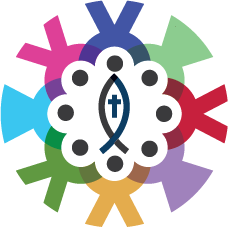A Humanitarian Crisis

The United Nations High Commissioner for Refugees (UNHCR) estimates that there were 22.5 million refugees and 2.8 million asylum seekers worldwide at the end of 2016, equating to, on average, 20 people displaced from their homes every minute. Australia’s humanitarian intake represents the third highest rate of UNHCR humanitarian resettlement worldwide, behind the United States and Canada, and is committed to a programme in 2018–2019 aiming to permanently resettle 18,750 humanitarian migrants.
Humanitarian migrants appear to be at a greater risk of mental illness, especially post-traumatic stress disorder (PTSD), when compared with wider host and non-refugee migrant populations: conflict exposed populations and refugees showed a prevalence of PTSD as high as 30.6% and depression at 30.8%. Additionally, prevalence of mental illness throughout the initial resettlement period seems high among humanitarian migrants. Over the long term, the prevalence of mental illness appears determined by the degree of trauma exposure and post-migration socioeconomic context.
Reference: Cooper et al. (2019). Determinants of Mental Illness Among Humanitarian Migrants: Longitudinal Analysis of Findings From the First Three Waves of a Large Cohort Study. Frontiers in Psychiatry, Public Mental Health, Vol 10. Article 545. Page 1.
Building a New Life in Australia

Australia, by annually granting about 14,000 visas under its Refugee and Humanitarian Programme since 1977, is one of the main countries for refugee resettlement in the world. The Australia’s Refugee and Humanitarian Programme comprises three major categories of permanent visas: refugee, the Special Humanitarian Programme (SHP) and onshore protection visas.
Applicants of refugee category are mainly identified and referred by UNHCR to Australia for resettlement. The SHP visa category is for people who are subject to substantial discrimination amounting to gross violation of their human rights in their home country, and who are proposed for entry by an eligible sponsor in Australia or New Zealand. The onshore stream covers people already in Australia who are found to be refugees according to the 1951 Refugee Convention. Humanitarian migrants (HMs) do not include economic migrants.
On arrival in the host country, HMs commonly face social and cultural disadvantages and challenges. For example, previous research has shown that HMs are vulnerable to suboptimal mental and physical health, compared with either residents or other migrants in resettlement countries. Consequently, the WHO has called for closing the health inequities gap between different groups by dealing with social determinants.
Social integration has been defined by the United Nations as the capacity of people to participate in social, cultural, economic, and political life in the community, and improving social integration may contribute to the reduction of migration-related health inequities through improving health of the most vulnerable migrants.
One aspect of social integration is the level of acculturation, which conceptualises migrants according to their cultural orientation or identification with traditional and host cultures.
According to the UN’s definition, “social integration is a multidimensional concept and involves gradual processes.” However, a comprehensive measure of what constitutes social integration has not been applied and most of the research described above has used the level of acculturation as a surrogate measure of social integration. In addition, the concept of acculturation does not necessary encompass social, economic, and political aspects of integration.
Therefore, we adopted a recent theoretical framework which measured social integration with four dimensions: economic integration, acculturation, social capital, and self-identity.
The study used data from the first wave of the ‘Building a New Life in Australia (BNLA)’ study. The study focused on HMs and was conducted by the Australian Institute of Family Studies. The BNLA project is a longitudinal study following a large cohort of recently arrived HMs as they settle into life Australia (2013–2018). Data used in this study were collected from October 2013 to March 2014 via home visits.
The study population included ‘migrating units’ (MUs) who had been granted permanent humanitarian visa in the 3–6 months preceding the survey. The MU could consist of a single individual (principal applicant) or members of a family (principal applicant and secondary applicants) who were named on the same visa application. Owing to high mobility of HMs and incomplete contact details (eg, without mobile phone number), a total of 2031 out of 4035 eligible principal applicants were successfully contacted, with 1509 people willing to participate in the study.
Mental health during the past 4 weeks preceding the survey was measured by the 6-item Kessler screening Scale for Psychological Distress (K6). The K6 has been translated into multiple languages and is used cross culturally for measuring non-specific psychological distress. The Australian K6 consists of six questions scored on a 5-point scale, with total scores ranging from 6 to 30. Respondents with scores of 19 and above are classified as having a probable serious mental illness.
The independent variable was social integration, which encompassed four dimensions: economic integration, acculturation, social capital, and self-identity.
Dimension 1- economic integration included four indicators:
(1) employment status
(2) main source of income
(3) current housing arrangement
(4) financial hardship in daily life
We used main source of income instead of the actual income as an indicator because 94% of study participants were unemployed. In terms of financial hardships, data were obtained on participants’ inability to pay for daily necessities and needing financial help due to lack of money.
Dimension 2-acculturation consisted of three dimensions:
(1) improvements in English language proficiency – defined as the difference of language proficiency between before and after migration
(2) self-sufficiency to participate in the life in Australia, which included seven items relating to social, cultural, economic, and political life in Australia
(3) participation of study or job training in Australia
Dimension 3-social capital consisted of four dimensions:
(1) Capacity to communicate with locals – making friends, understanding the culture and talking to neighbours in Australia.
(2) Community support – measured support in Australia from different community groups.
(3) Frequency of attending place of worship
(4) Type of friends in Australia
Dimension 4 – self-identity was measured by three indicators:
(1) Feeling part of the Australian community
(2) Feeling welcomed
(3) Experiencing discrimination in Australia
Country of origin was derived from country of birth on participants’ visa application – in total, 35 countries were coded under the Australian Refugee and Humanitarian Programme’s three major categories of permanent visas: refugee, SHP and onshore protection visas. The mean age was 35.5 years, 54 per cent of the participants were male, and 57 per cent were married or cohabitating. More than half (56 per cent) of the participants came from North Africa and the Middle East, 80 per cent arrived in Australia under the refugee visa pathway and 76 per cent had lived in Australia for less than six months. Most participants (91 per cent) had been exposed to trauma before coming to Australia.
More than 60 per cent of participants indicated that they were in good general health, though 46 per cent experienced physical pain and 17 per cent probably had a serious mental illness (according to their K6 score) during the 4 weeks preceding the survey. As mentioned, 93 per cent were unemployed, 43 per cent were experiencing at least one financial hardship in Australia, yet only 15 per cent of HMs had participated in study or job training. In total, 47 per cent attended a place of Worship and 47 per cent had friends, mainly from their own ethnic/religious community. The proportion of participants always feeling part of the Australian community was also 47 per cent, with 54 per cent feeling welcomed in Australia.
Self-sufficiency was positively associated with all aspects of physical health. In addition, participants reporting improvements in English language proficiency had better general health. Improved English language proficiency, higher degrees of self-sufficiency, the capacity to communicate, being able to attend a place of worship weekly or more often, feeling welcomed in Australia and having friends from different ethnic/religious communities were all associated with good mental health.
The findings of our study show that the so-called ‘healthy migrant paradox’ reported among non-refugee migrants was not true among HMs. Our data particularly highlight the serious mental illness of HMs, with 17 per cent of them probably having a serious mental illness. This finding compared unfavourably with the 2014–2015 Australian National Health Survey data, which found that 3.7 per cent of Australian had a serious mental illness.
Our results have high policy relevance for promoting resettlement services for HMs. In Australia, the Humanitarian Settlement Services Programme provides early settlement services for the first 6–12 months of resettlement. The programme helps with accommodation, initial food and information on health, education/language, employment, and culture. To improve HMs’ health, our findings suggest that fostering social integration could be an important element of resettlement services in the future. Such programmes could focus more on social capital, and self-sufficiency, to facilitate HMs’ capacity to communicate with locals and their ability to make friends from different backgrounds, attend social events such as places of worship and adapt to the new environment.
Reference: Chen W, et al. (2017). Building a new life in Australia: an analysis of the first wave of the longitudinal study of humanitarian migrants in Australia to assess the association between social integration and self-rated health. BMJ Open 7:e014313. doi:10.1136/bmjopen-2016-014313

